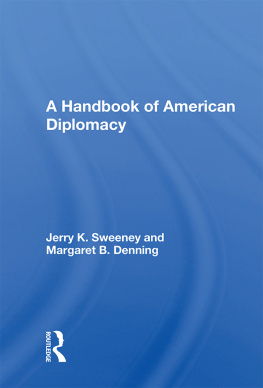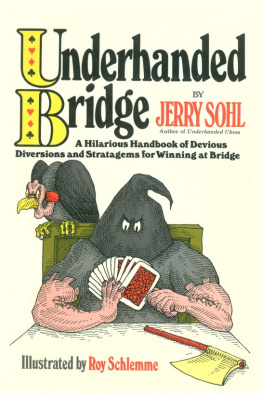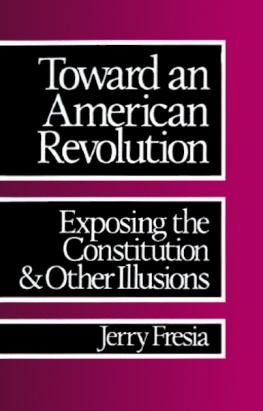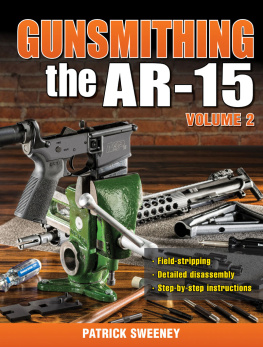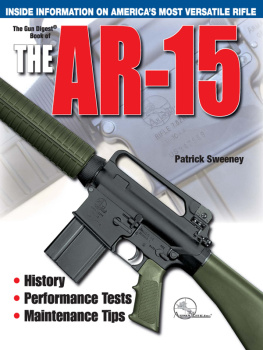A Handbook of American Diplomacy
A Handbook of American Diplomacy
Jerry K. Sweeney
and Margaret B. Denning
First published 1993 by Westview Press
Published 2018 by Routledge
52 Vanderbilt Avenue, New York, NY 10017
2 Park Square, Milton Park, Abingdon, Oxon OX14 4RN
Routledge is an imprint of the Taylor & Francis Group, an informa business
Copyright 1993 Taylor & Francis
All rights reserved. No part of this book may be reprinted or reproduced or utilised in any form or by any electronic, mechanical, or other means, now known or hereafter invented, including photocopying and recording, or in any information storage or retrieval system, without permission in writing from the publishers.
Notice:
Product or corporate names may be trademarks or registered trademarks, and are used only for identification and explanation without intent to infringe.
A CIP catalog record for this book is available from the Library of Congress.
ISBN 13: 978-0-367-00437-8 (hbk)
This work is concerned with the diplomatic history of the United States since the first settlers set foot on the shores of the continent. It is a handbook to serve a general public interested in American diplomacy as well as students engaged in course work in that area. Consequently, the authors assume a certain degree of familiarity with the subject in question.
The work consists of six sectionseach of which contains an introductory essay describing the dominant themes, a chronology of events, a summary of important treaties, selected biographic treatments, and an annotated bibliography. The reader will also find a glossary of commonly used terms in diplomatic discourse and an index presenting the chronological position of the agreements summarized. The six sections exist somewhat independently of one another, in accord with the assumption the reader will ofttimes consult the work with a specific intention. This work is not designed to be "read" in the fashion of a monograph.
This work ends in 1990that transitional year between the verities of the Cold War and the uncertainties of the "New World Order." Therefore, the reader is presented with a discrete period which opens with otherwise unremarkable events that proved of seminal importance, and concludes with the end of the most defining process of recent decadesthe Cold War.
Chronology
The chronology section contains those treaties and incidents which appear in the standard American diplomatic history text. Certain agreements are also listed which, although abortive (unratified), affected the conduct of diplomatic relations. The date listed for a specific treaty is the date of signature, not the date of ratification, inasmuch as the latter differ so widely given the legislative processes of the various countries.
The chronology also contains the date upon which the relevant documents were presented to specific foreign governments by American representatives in the course of establishing a formal diplomatic connection. Thus, the entry "1779 23 March: Diplomatic relations with France" indicates that on that date the first diplomatic representative from the U.S. presented his credentials to the government of France.
Some entries relating to the domestic history of various countries are presented, but only insofar as such developments impact directly and visibly on the conduct of American diplomacy, Obviously, the decision as to what to include in this particular area is subject to dispute in that any politico-economic action affects, to one degree or another, the diplomatic relationship between nations. This section not only functions as a means of review, it provides the reader with a ready reference with respect to the chronological interaction which often exists between disparate circumstances, and presents the specific temporal information so essential when consulting time-sensitive materials.
Diplomatic Agreements
This section provides a concise treatment of those treaties ratified by the United States which appear in the earlier section. It also includes most of those international organizations which are significant in the conduct of American diplomacy, e.g. O.P.E.C. and A.S.E.A.N. Those interested in a concise treatment of a particular agreement for the purpose of review will be afforded same, while the annotated bibliography will point the way to more detailed appraisals. Those treaties which went unratified by the U.S. are not discussed in this section because their provisions never went into effect, and thus did not directly govern the course of American Diplomatic History. They are, however included in the chronology because they reflect values and agendas which were strongly held but did not prevail.
Dramatis Personae
The biographical entries deal with individuals of note, usually non-Americans, who are frequently one dimensional figures in anything but comprehensive monographs. This section affords readers with that minimum information regarding selected individuals so as to see them as more than just a title. This section is not intended to furnish a complete biographical appraisal, but rather to assist the reader in recognizing the less-mentioned actors in American diplomatic history.
Annotated Bibliography
The bibliographic statement furnishes a guide to the significant monographs relevant to the period or to a particular subject. The works contained in the annotated bibliography were chosen according to their availability to students and lay readers as well as their representative character in addressing the periods and issues focused on in this volume. In order to develop a list concise enough to be useful to the reader, numerous other outstanding monographs are regrettably not included. Such works are, however, presented in the bibliographies of the books included here and are accessible through them. In short, the annotated bibliography serves as a first level of research and a departure point from which to pursue a more detailed understanding of periods and issues.
Jerry K. Sweeney
Margaret B. Denning
The authors thank the following colleagues and friends for their assistance and support in the preparation of the handbook:
Gayle Idema, Michele A, Kemp, Barb Burress, and Beth Boleyn for cheerful secretarial assistance.
Elizabeth Healy, Wendy Anderson, Joy Feucht, and Hermon Mebrathu for patient and resourceful library support.
Sioux Falls College for three consecutive years of Faculty Incentive Awards for scholarly work which provided release time and funding to pursue the research necessary for this project.
Matthew, Jennifer, and Whitney for the times Jerry wasn't there.
Leslie Volaric of Slippery Rock University Media Services for patient and accurate typesetting.
Amy Eisenberg and Jennifer Knerr of Westview Press for valuable editorial comments.
J.K.S.
M.B.D.
1
Rebellion and War 1686-1815
The overlapping territorial claims by Britain, France and Spain were certain to produce conflict in North America. This period of rebellion and war featured Britain and France inasmuch as their colonial focus was on North America. Furthermore, Spain no longer occupied a position as arbiter of European affairs, whereas Britain and France were contending for the honor. In consequence, the first century of American diplomatic activity involved the colonial aspects of the several European Wars fought to determine who would dominate Europe.


